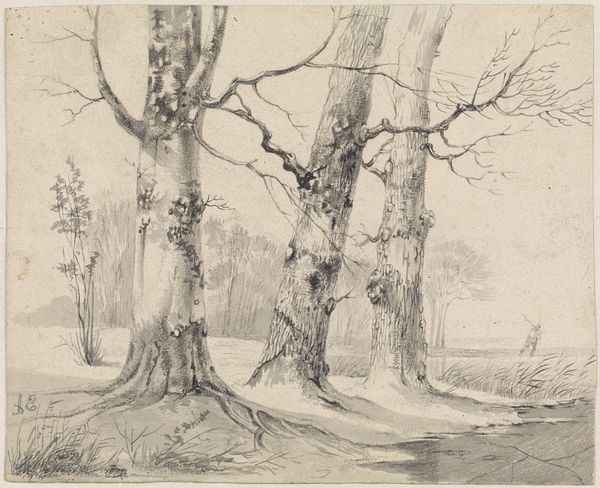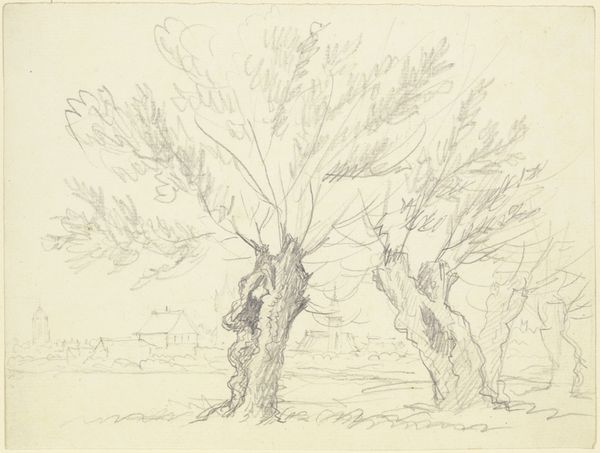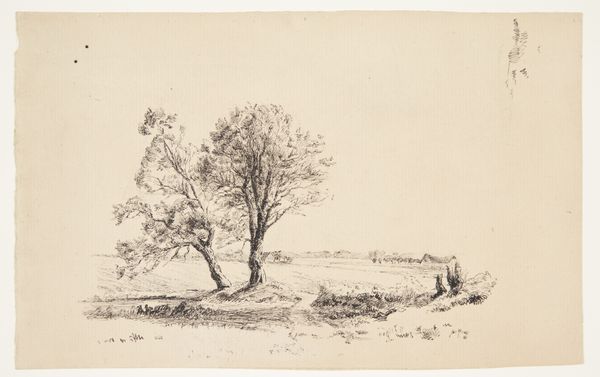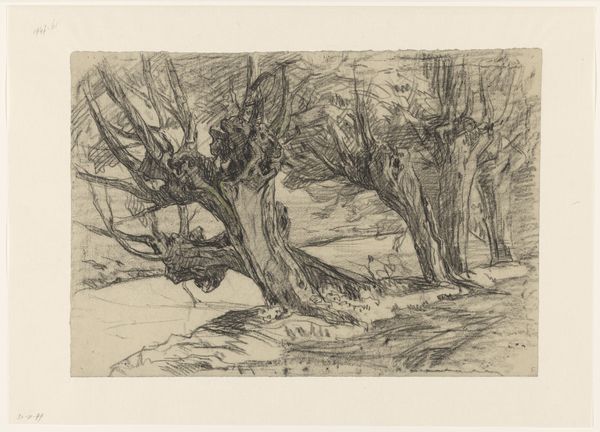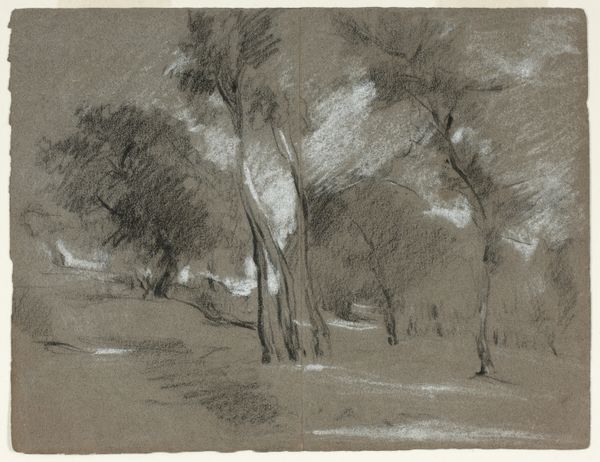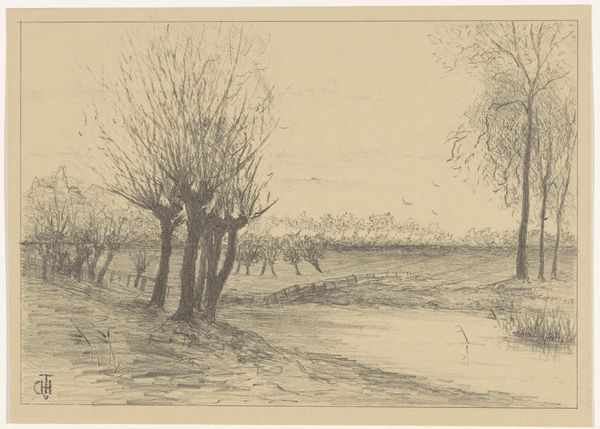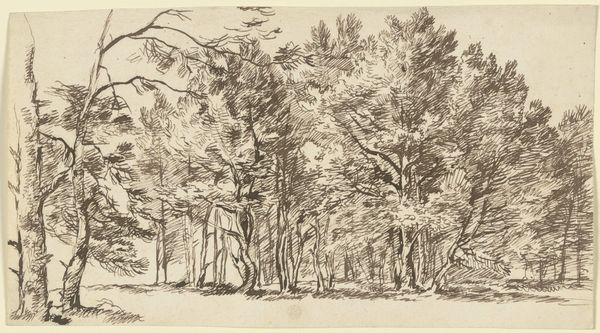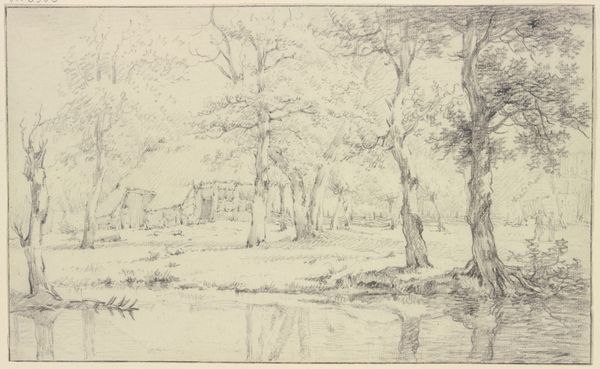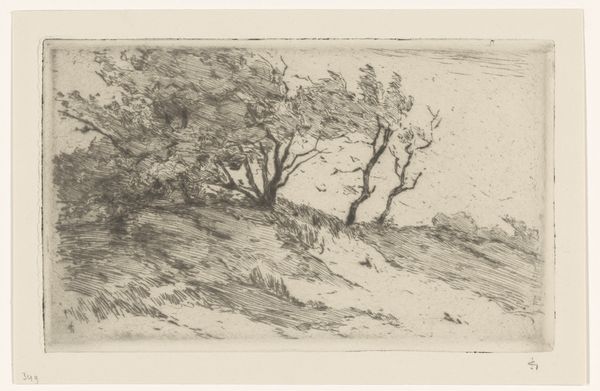
drawing, paper, dry-media, pencil, graphite
#
drawing
#
pencil sketch
#
landscape
#
paper
#
form
#
dry-media
#
romanticism
#
pencil
#
15_18th-century
#
line
#
graphite
#
botanical art
Copyright: Public Domain
Curator: We're looking at "Four Willows", a pencil and graphite drawing currently held at the Städel Museum, by Friedrich Wilhelm Hirt. Editor: My first impression is of quietude; there’s a softness and simplicity to the composition. It feels…restorative, almost melancholic. Curator: It's interesting you say melancholic. The Romantic era often utilized landscape to evoke specific emotions, and the willow, with its weeping branches, becomes a symbol. One notes here the linearity, the form, the contrast generated in a skillful interplay between stark pencil lines and softer, smudged graphite. Editor: Yes, those weeping branches are often associated with sorrow, remembrance, even death. The arrangement of these particular trees—so closely grouped, yet distinct—brings to mind community and resilience in the face of adversity. The subdued tones mirror landscapes scarred by industrial development; Hirt here may be elegizing more than loss in an abstract way. Curator: A persuasive reading. And the repeated verticality—the tree trunks, the grasses along the bank—creates a rhythmic, almost musical pattern. The negative space between the trees is just as important as the solid forms. It’s through that interplay that the artist achieves such a balanced composition. Editor: Balanced, yet also vulnerable. Trees so strongly anthropomorphized symbolize a rooted, deeply feminine nurturing presence, so to render them like this may expose the vulnerabilities of this kind of natural world in an increasingly man-made society. Curator: Undoubtedly, a rich landscape elicits many perspectives! Examining this image is an exercise in appreciating how line, form and texture conspire to create affect. Editor: Yes. Seeing this drawing today invites consideration of the ecological devastation occurring due to globalization and how these images from the past continue to engage, critique, and reflect our reality.
Comments
No comments
Be the first to comment and join the conversation on the ultimate creative platform.
